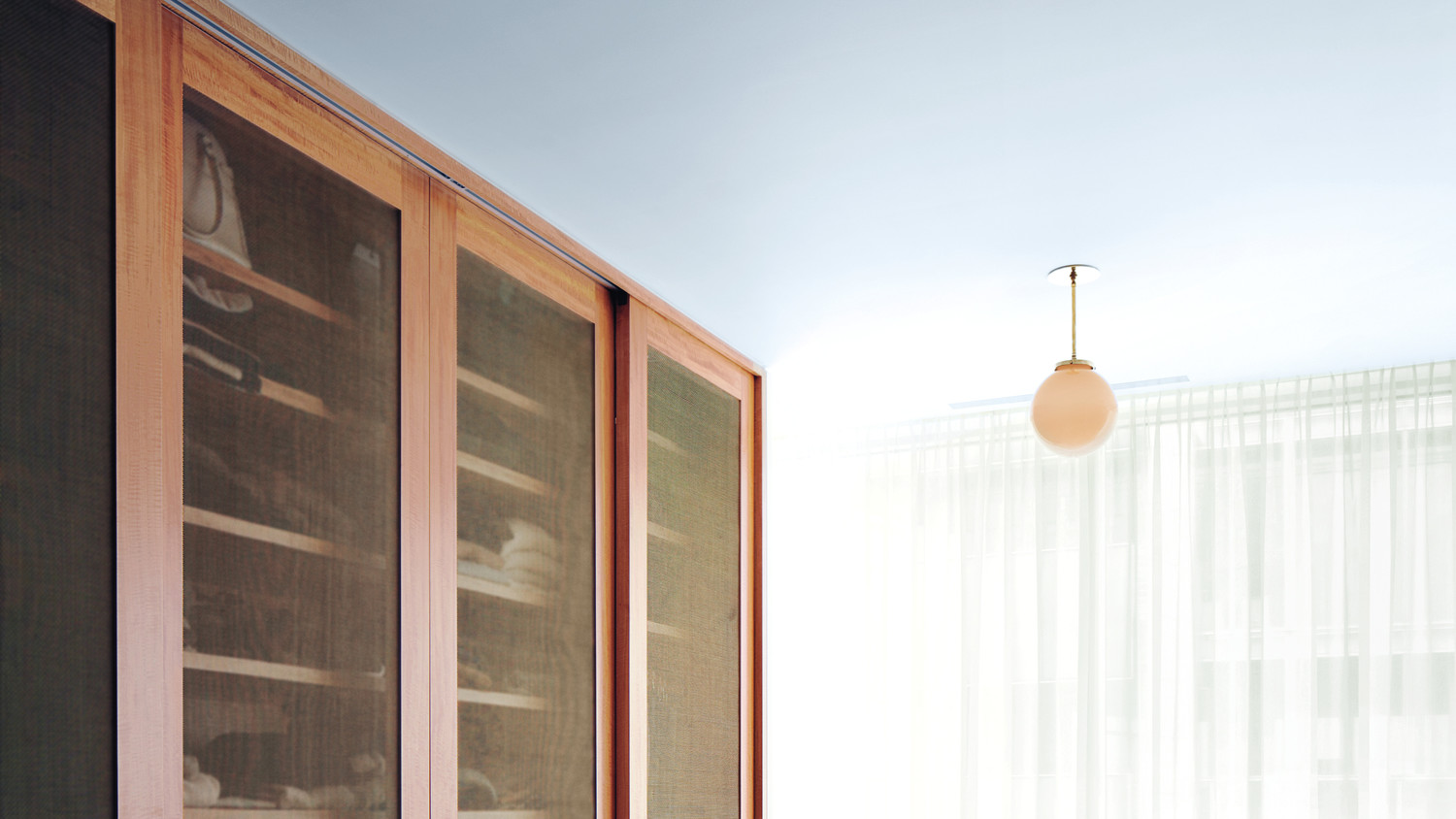
A colored ceiling is a room changer. Depending on the hue you pick, it can open up a small space, brighten a dark room, cast a flattering glow, or spotlight architectural details. Yet when it comes time to paint interiors, most homeowners neglect to consider the ceiling. That oversight is a missed design opportunity. “Think of your ceiling as your fifth wall,” urges MSL decorating director Kevin Sharkey. He shares his favorite paint colors for ceilings on these pages, as well as the types of rooms they are best suited for. Now, get ready to put color up where it belongs.
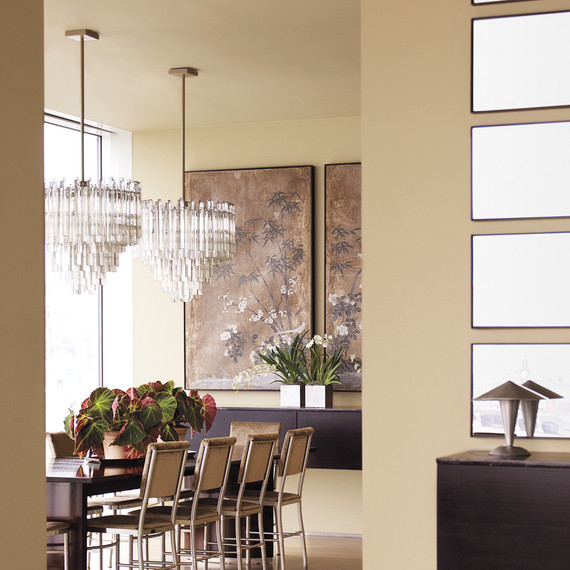
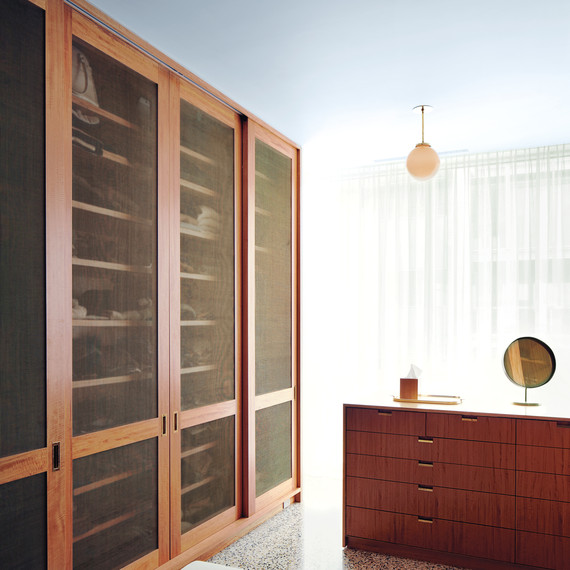
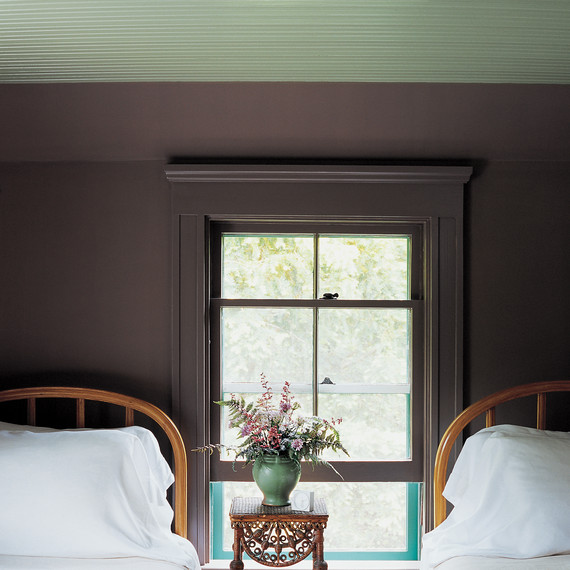
Photography by: WILLIAM ABRANOWICZ
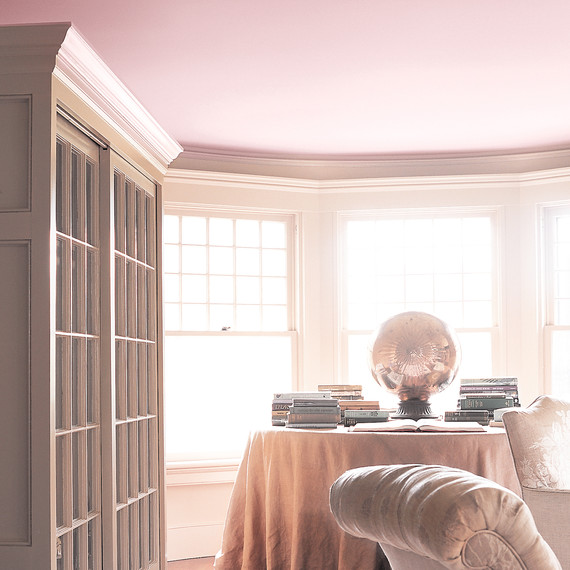
Paint by Number
Here’s how to pick the right ceiling color: First, determine the type of room. Next, choose a cool or warm palette. Finally, match the room type to the number on your chosen palette—and you’re on your way.
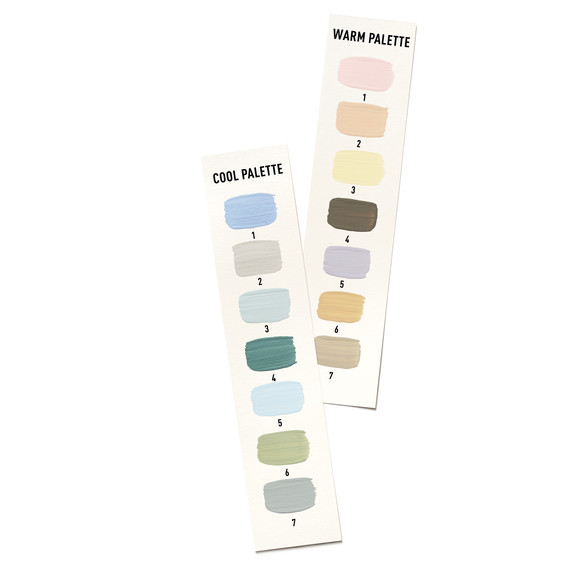
Photography by: Bryan Gardner
1. A Small Room
It’s easier to take a risk when you’re working with a small space, so “pick something memorable,” says Kevin. “But that doesn’t mean the color needs to be loud. Pale shades, like this blue and pink, feel more pronounced in a small room than they would in a large space.” Still Pool, by Ralph Lauren, homedepot.com. Verbena, sherwin-williams.com.
2. A Large Room
Play it safe, with neutral colors. When you have a huge expanse of ceiling, you don’t want to paint it a hue that will overwhelm the rest of the room. “At the same time, it should be interesting enough that you notice it,” says Kevin. Pale Oak, benjaminmoore.com. Flax, prattandlambert.com.
3. A High Ceiling
High ceilings are always a plus, but they can disappear above you. What you want in this situation is to highlight the airiness of the room by drawing the eye up. A blue ceiling has the added advantage of referencing the sky. Crystalline Falls, by Behr Marquee, homedepot.com. Beeswax, by Eve Ashcraft, finepaintsofeurope.com.
4. A Low Ceiling
Some experts advise painting ceilings a lighter color to give the illusion of height. But Kevin likes to paint them a darker color, even a deep brown, to accentuate the intimacy created by a low-ceilinged room. Luna, c2paint.com. Dansbury Downs, prattandlambert.com.
5. A Bright Room
Paint colors generally look different once they’re out of the can and applied to the walls. “But in a room with a lot of natural light, what you see is what you get—the pure color,” says Kevin. “So feel free to choose really light colors, which may not show up in darker rooms but will shine through in brighter ones. This beautiful lavender, for instance, wouldn’t be nearly as charming in a dark room.” Sweet Bluette, benjaminmoore.com. Will O the Wisp, by Behr Marquee, homedepot.com.
6. A Dark Room
Many people will paint a ceiling white in an effort to brighten up a dark room. “That just makes it look gloomy and sad, because the white doesn’t translate as white in a space that has little light,” says Kevin. Instead, opt for rich, saturated hues, which will hold their own in a dark space. “The yellow I chose can also warm up the space.” Vert de Terre and Hay, farrow-ball.com.
7. A Complicated Ceiling
If you have a tray ceiling, ceiling beams, or decorative features on the ceiling, like plaster rosettes, you’ll want to spotlight the distinctiveness. The key is to select colors that pick up shadows well and give dimension to the decorative elements—colors that look good both a shade darker and a shade lighter. Stonington Gray, benjaminmoore.com. Relaxed Khaki, sherwin-williams.com.
DIY Know-how
Equip Yourself
You’ll need everything you normally would to paint walls—plus a stepladder and goggles to protect your eyes.
Prevent and Protect
Cover everything with drop cloths, remove light fixtures if possible, and wrap ceiling-fan blades in plastic. Also, keep a damp cloth handy to wipe up drips and splatters.
Outline First
After taping the walls where they meet the ceiling, use a small brush to paint a three-to-four-inch band around the perimeter.
Roll Right
Fill in with a roller right after painting the perimeter, while the border is still wet, to reduce the possibility of a visible line between the two sections.
SOURCE:http://www.marthastewart.com/1125739/painting-ceilings-top-coat